Comparison of GPS Modules: UBlox LEA-6H vs Blues Wireless Notecarriers
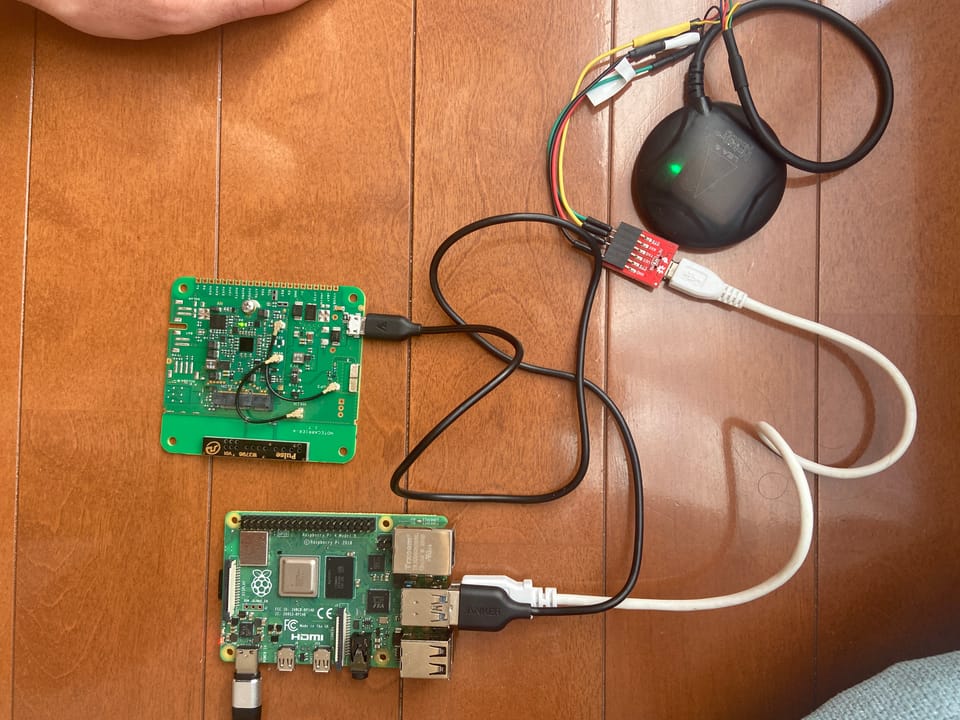
Summary
Three tests were performed:
- UBlox LEA-6H module vs. Notecarrier-Pi with Active Antenna
- UBlox LEA-6H module vs. Notecarrier-A-v1.7 with on-board GPS Chip Antenna
- UBlox LEA-6H module vs. Notecarrier-A-v2.0 with on-board GPS Chip Antenna
Analysis was done using the standard pandas, numpy, and matplotlib python libraries.
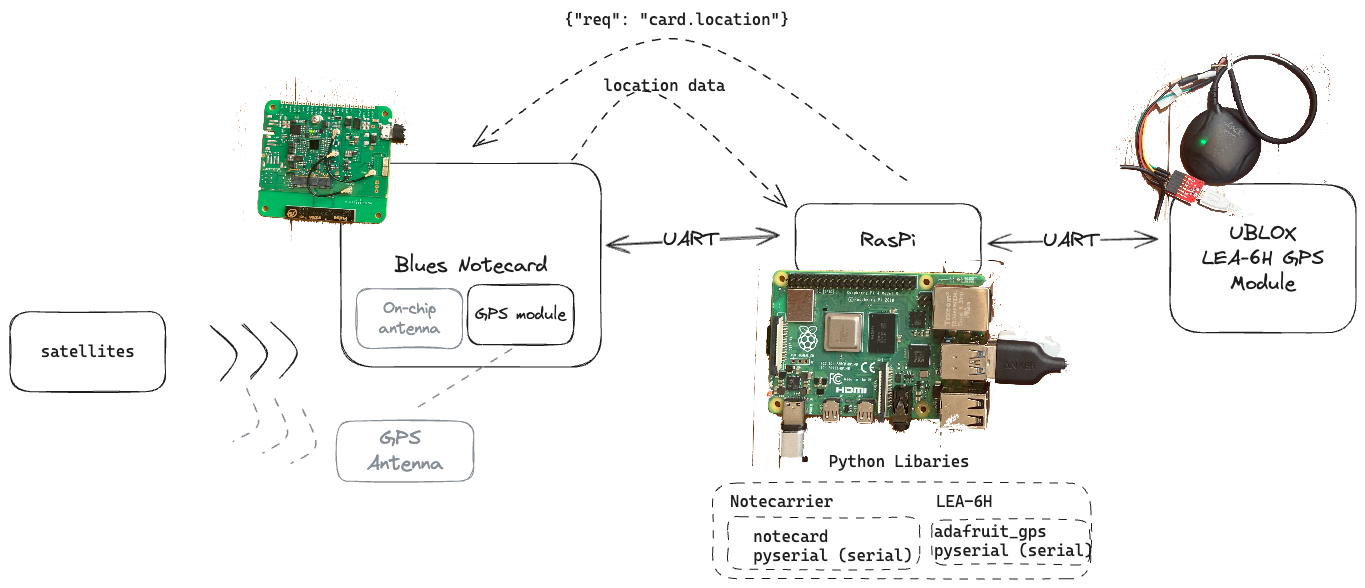
Generally the Ublox LEA-6H module
- dropped less samples ✅
- got a fix on more satellites ✅
- was less precise / had a lot more jitter in the lat/long ❌ (sometimes on the order of 100m) - note though that I wasn’t applying any filters to the data
- seemed more affected by worse weather or less-than-ideal placement inside. ❌
The Notecarrier modules
- have much more “precision” (it probably does its own filtering and also might be using assisted GPS with the cell tower reads as well) ✅
- was less affected by worse weather or indoor placement ✅
- got a fix on less satellites at ❌
- dropped more samples ❌
The old notecarrier with gps chip antenna (v1.7) and the notecarrier-pi with the active antenna were about the same, but the notecarrier-a v2.0 showed a big increase in precision.

Note that below we go from a span of 4-10 meter errors to 0.85 to 1.10 meter errors. The LEA-6H histogram is not shown since it was ranging between 1 and 100 m.

Improvement in Precision on Notecard Versions
Notecarrier Pi with Active antenna:

Notearrier A v2.0


Notecard Signal Dropped Comparison
Note we can’t really compare these because they were taken on different days, but look how the Notecarrier v2.0 drops less data samples.


Further
- Test cold start time-to-fix
- Add in bearing to get the directional skew (i.e. vectorize the error)
Appendix - Full Data
LEA-6H vs Notecarrier-Pi w/ Active Antenna
The error distance was calculated based on the distance from a “true” point picked on google maps, so at the <5m distance the “true” value may have been wrong.
The Notecard gps was much more precise with a smaller spread around the center. There is likely some filtering / averaging going on at the notecard level or they are using assisted GPS with the cellular tower data.
Summary for LEA:
Rows: 8639
Error Uptime (): 100.000000% (8639/8639)
Satellites Uptime (): 100.0% (8639/8639)
Summary for Notecard:
Rows: 8639
Error Uptime (): 97.789096% (8448/8639)
Satellites Uptime (): 100.0% (8639/8639)
Error/Distance Comparison

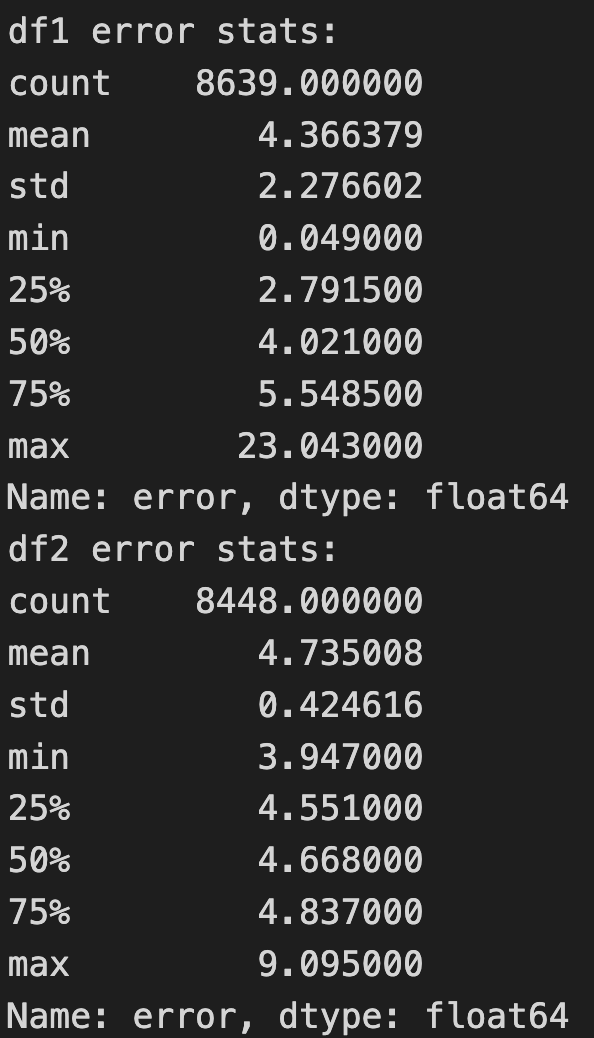
Left: Histogram and box plots of error (m). Right: Descriptive statistics of error. df1 is LEA-6H, df2 is Notecard.
Uptime
Here we plot the same graph as above (error), but showing “null” values as zero. We see the Notecarrier-Pi drops a lot more data. The bottom plot is the “signal” value that the notecard reports, we can see some of the signal values drop to zero for the notecard, even when the Ublox module has a fix.

Number of Satellites
Ublox module had more satellites more often (average of ~12 versus ~8 for the Notecard with active antenna)
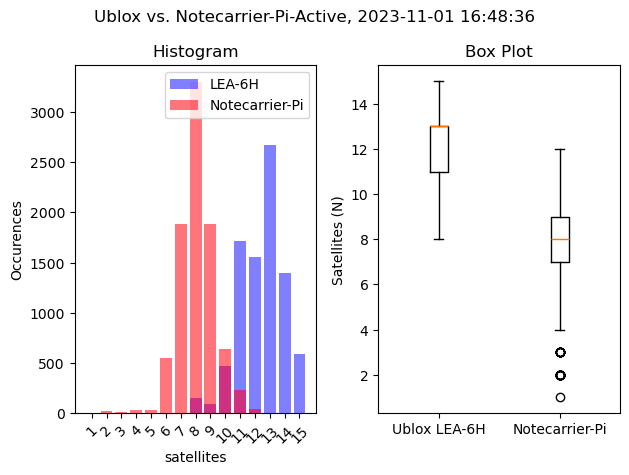

Left: Histogram and box plot of number of satellites acquired. Right: Descriptive statistics, df1 is LEA-6H, df2 is Notecard.

LEA-6H vs Notecarrier-A-v1.7 w/ GPS Chip Antenna
Note that this test was done at a different location than the previous test.
Summary for LEA:
Rows: 8639
Error Uptime (): 100.000000% (8639/8639)
Satellites Uptime (): 100.0% (8639/8639)
Summary for Notecard:
Rows: 8639
Error Uptime (): 86.595671% (7481/8639)
Satellites Uptime (): 100.0% (8639/8639)
Error/Distance Comparison

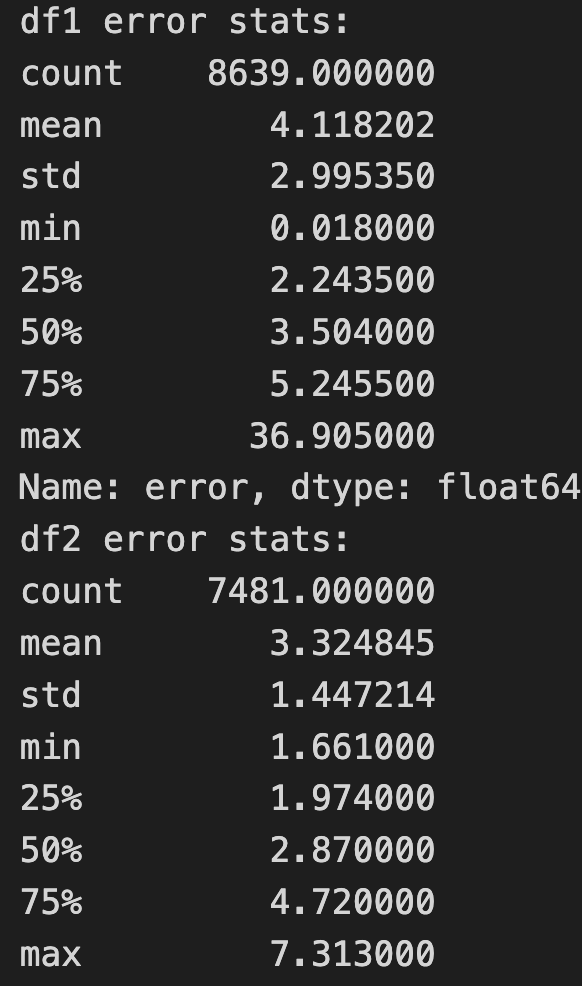
Left: Error (m) histogram and box plot. Right: Summary statistics (df1 is LEA-6H)
Uptime
Here we plot the same graph, but showing “null” values as zero. We see the Notecarrier-Pi drops a lot more data.
Summary:
- LEA-6H Error Uptime: 100% (8639/8639)
- Notecarrier-A-v1.7 Error Uptime: 86.595671% (7481/8639) i.e. ~1000 dropped datapoints

Number of Satellites
Same as before, Notecarrier gets a fix on less satellites

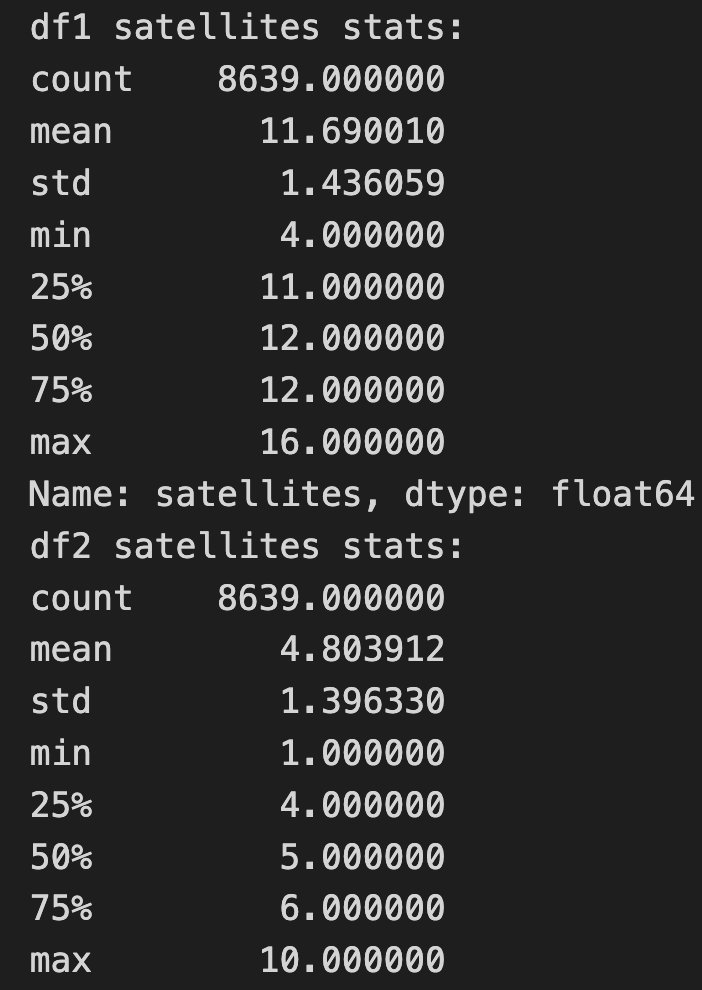

LEA-6H vs. Notecarrier-A-v2.0 w/ GPS Chip Antenna
Summary for LEA:
Rows: 8638
Error Uptime (): 99.120167% (8562/8638)
Satellites Uptime (): 99.12016670525584% (8562/8638)
Summary for Notecard:
Rows: 8639
Error Uptime (): 94.281746% (8145/8639)
Satellites Uptime (): 100.0% (8639/8639)
Error/Distance Comparison
The updated v2.0 notecarrier is very precise, so much that you can barely see its range of values when plotted on top of the Ublox module.
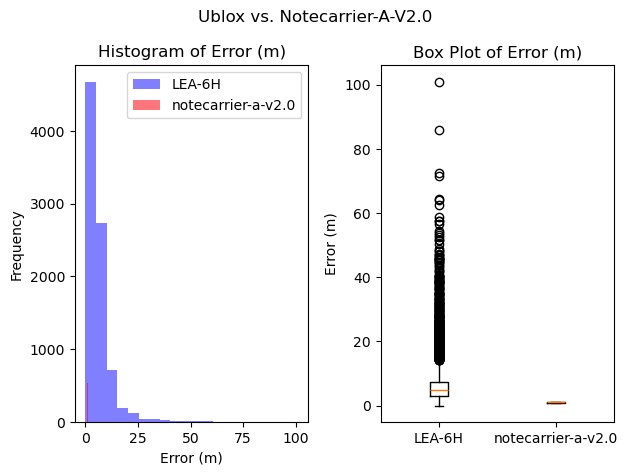
Zooming in on the “error” of the Notecarrier A v2.0 shows that its precise within 0.9 to 1.1 meters for all ~8k samples

Uptime
We still want to see the signal uptime for the notecard, which is also improved (less datapoints at 0dB SNR for the bottom plot).

Satellites
The Notecarrier is still only looking at between 3-9 satellites on average.

Time series:
